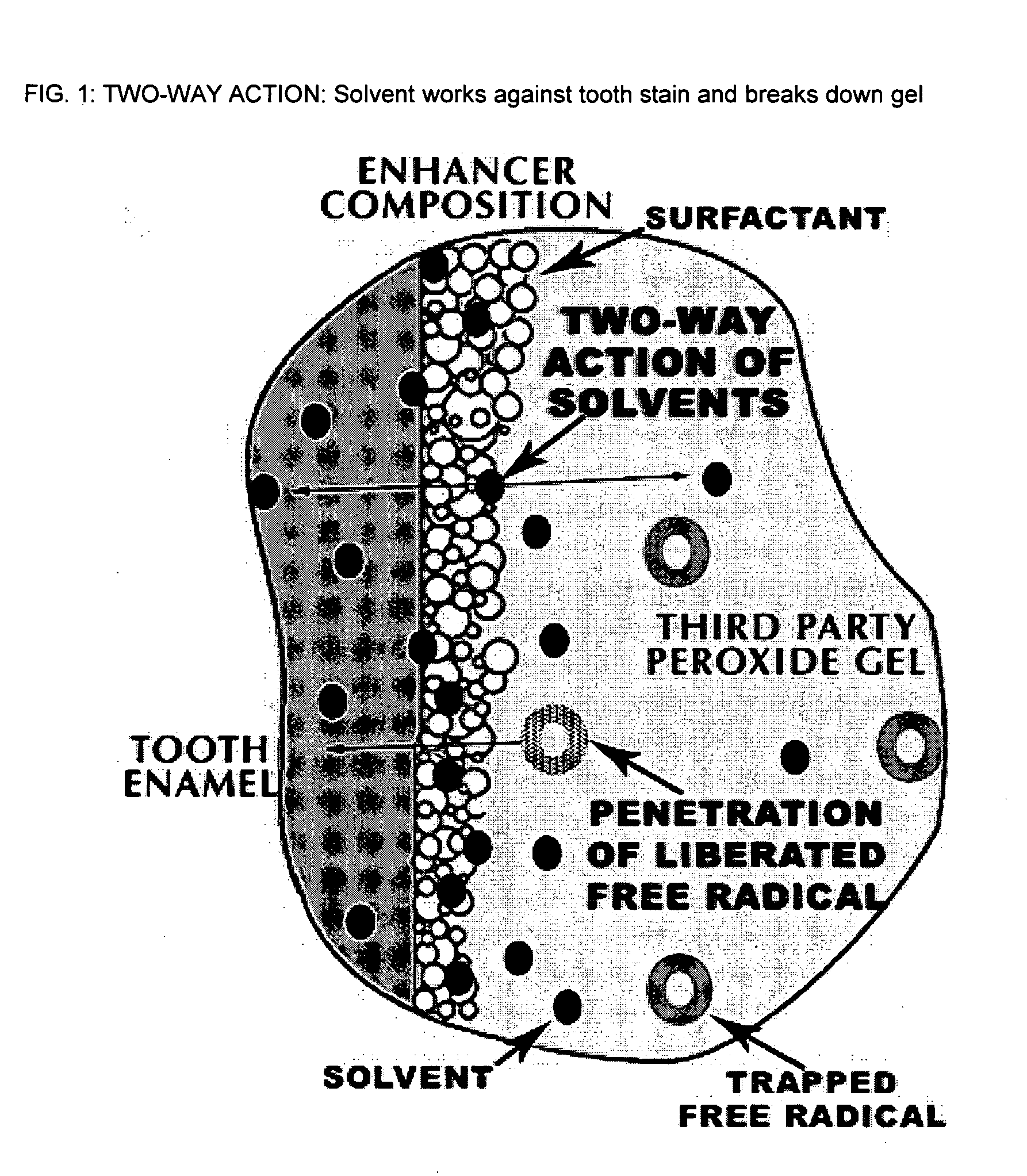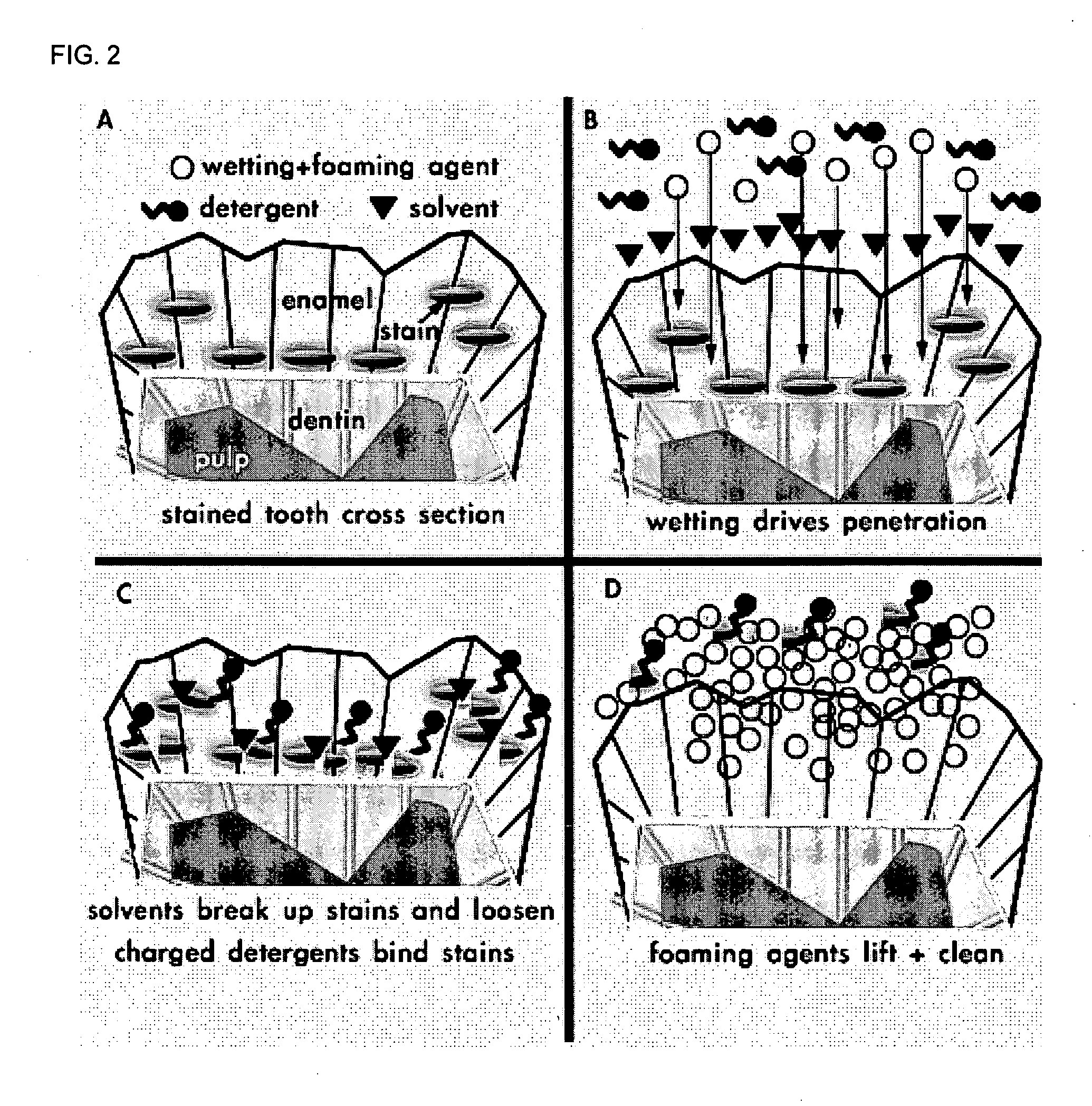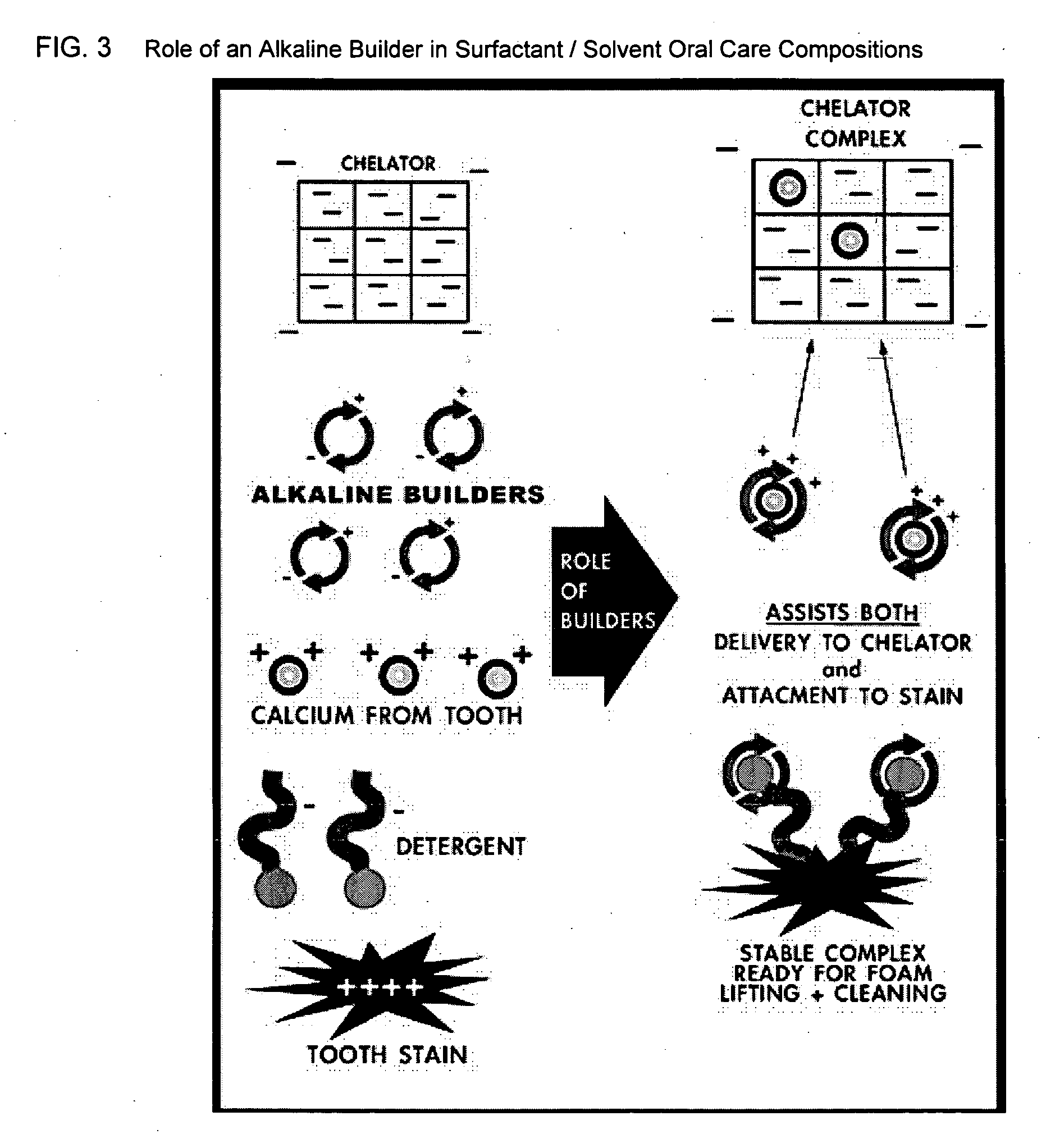Stand-alone or enhancer composition for oral care
- Summary
- Abstract
- Description
- Claims
- Application Information
AI Technical Summary
Benefits of technology
Problems solved by technology
Method used
Image
Examples
Embodiment Construction
[0024] The detailed description set forth herein is intended as a description of several exemplary compositions for enhancing the effectiveness of tooth whitening and / or other oral care compounds according to the present invention and is not intended to represent the only forms in which such compositions may be prepared or utilized. The description sets forth features of and steps for preparing and using the preferred enhancer compositions of the present invention. It is to be understood, however, that the same or equivalent ingredients may be incorporated in different embodiments of the invention to allow it to be used as a stand-alone whitener or to allow it to be incorporated into mouth rinse, dentifrice, prophylaxis paste, enamel and dentin bonding systems, caries prevention tooth sealants, desensitizing treatments and many other oral care products. Furthermore there are many compositions that may accomplish the same functions or achieve the same results and such compositions ar...
PUM
| Property | Measurement | Unit |
|---|---|---|
| Fraction | aaaaa | aaaaa |
| Fraction | aaaaa | aaaaa |
| Fraction | aaaaa | aaaaa |
Abstract
Description
Claims
Application Information
 Login to View More
Login to View More - R&D
- Intellectual Property
- Life Sciences
- Materials
- Tech Scout
- Unparalleled Data Quality
- Higher Quality Content
- 60% Fewer Hallucinations
Browse by: Latest US Patents, China's latest patents, Technical Efficacy Thesaurus, Application Domain, Technology Topic, Popular Technical Reports.
© 2025 PatSnap. All rights reserved.Legal|Privacy policy|Modern Slavery Act Transparency Statement|Sitemap|About US| Contact US: help@patsnap.com



